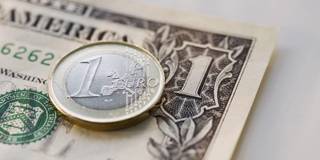The dollar’s fall in July to a two-year low against the euro was the catalyst for sensational headlines shouting that the dollar would soon meet its doom. But too much should not be read into the dollar's recent moves, which reflect readily explicable fluctuations, not the greenback's terminal decline.
BERKELEY – The dollar is in free-fall! The global greenback is doomed! scream recent headlines. Actually, such sensational headlines are “too sensational,” to echo that noted authority on currencies, Miss Prism, in Oscar Wilde’s “The Importance of Being Earnest.”
The dollar’s fall in July to a two-year low against the euro was the immediate impetus for these stories. In fact, the dollar’s recent slide is one in a series of readily explicable fluctuations. When the COVID-19 pandemic went global in March, the dollar strengthened on the back of safe-haven flows into US Treasuries, as it does at the start of every crisis. By May, the Federal Reserve, acting as global lender of last resort, had accommodated this mad scramble for dollars by pouring buckets of liquidity into financial markets, and the greenback gave back its early gains.
The dollar’s subsequent depreciation reflects the changing prospects of the US and European economies. With the spread of COVID-19, the US outlook is deteriorating, so investors expect the Fed to keep interest rates low for longer. In the eurozone, the virus is under better control, and data from purchasing managers’ surveys are surprising on the upside.

BERKELEY – The dollar is in free-fall! The global greenback is doomed! scream recent headlines. Actually, such sensational headlines are “too sensational,” to echo that noted authority on currencies, Miss Prism, in Oscar Wilde’s “The Importance of Being Earnest.”
The dollar’s fall in July to a two-year low against the euro was the immediate impetus for these stories. In fact, the dollar’s recent slide is one in a series of readily explicable fluctuations. When the COVID-19 pandemic went global in March, the dollar strengthened on the back of safe-haven flows into US Treasuries, as it does at the start of every crisis. By May, the Federal Reserve, acting as global lender of last resort, had accommodated this mad scramble for dollars by pouring buckets of liquidity into financial markets, and the greenback gave back its early gains.
The dollar’s subsequent depreciation reflects the changing prospects of the US and European economies. With the spread of COVID-19, the US outlook is deteriorating, so investors expect the Fed to keep interest rates low for longer. In the eurozone, the virus is under better control, and data from purchasing managers’ surveys are surprising on the upside.